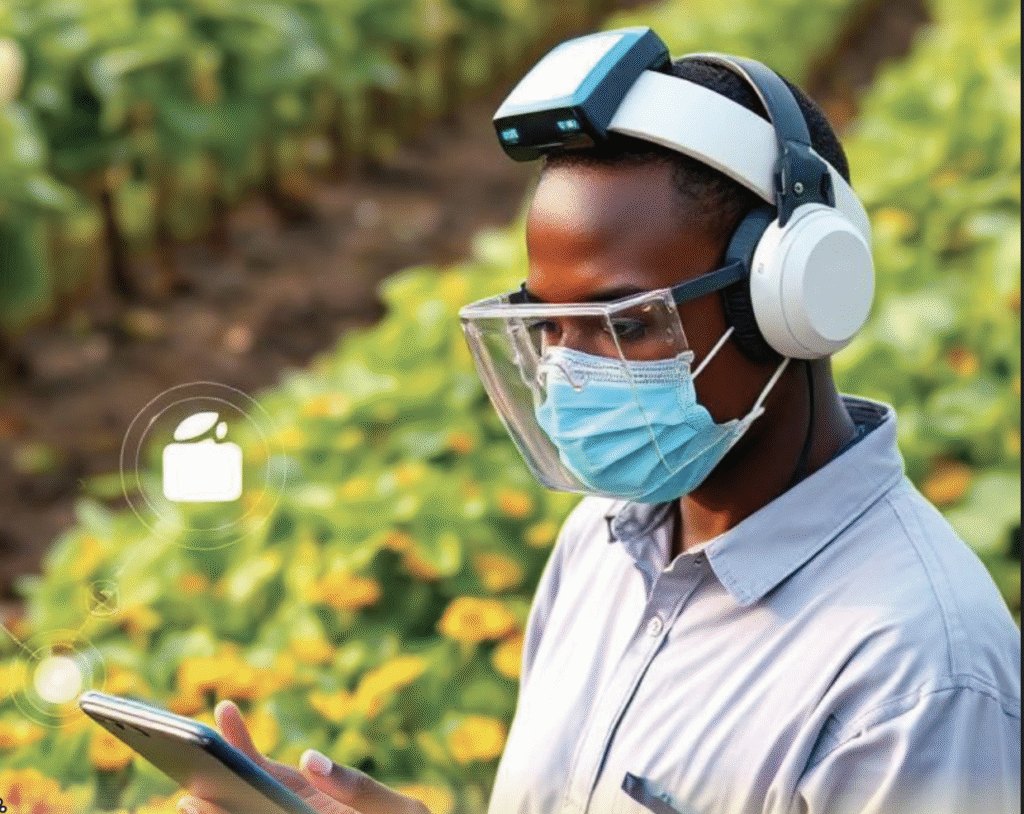By Prof Arun Tiwari
The agri-food system, encompassing the entire chain from agricultural production to food consumption, is undergoing a transformative shift driven by the increasing prevalence and significance of data.
As the world aims to ensure food security, improve sustainability, and support rural livelihoods, the effective collection, analysis, and application of data within agri-food systems has become essential.
The agri-food system refers to the network of activities involved in the production, processing, distribution, and consumption of food. It includes farmers, input suppliers, processors, distributors, retailers, consumers, and policymakers. As populations grow and dietary preferences evolve, these systems are under pressure to increase productivity, improve resilience to climate change, and minimise environmental footprints.
Data is central to navigating these challenges and unlocking new opportunities for innovation. Data within agri-food systems is diverse and originates from multiple points along the value chain. It includes production data, environmental data, market data, supply chain data, socioeconomic data, and, not to be overlooked, nutrition and health data. Information on crop yields, livestock numbers, planting and harvest dates, fertiliser and pesticide usage, irrigation methods, and farm management practices is huge. Weather patterns, soil health, water quality and availability, biodiversity, and climate variables play their role. Prices of agricultural inputs and outputs, demand forecasts, consumer preferences, and export/ import statistics are intricately linked with logistics, storage conditions, transportation efficiency, inventory levels, and the traceability of food products. Information on farmer incomes, labour patterns, gender and youth participation, rural development indicators, and policy impacts is crucial as is that on dietary intake, food safety incidents, prevalence of malnutrition or obesity, and fortification efforts.
This data can be quantitative (for example, number of tons harvested, rainfall in millimetres) or qualitative (for example, farmer perceptions, consumer feedback). Data empowers decision-making at every stage of the agricultural and food value chain. With accurate data,
farmers can optimise planting times, choose suitable crop varieties, monitor soil health, and apply inputs more precisely. Precision agriculture—using GPS, sensors, and data analytics— enables targeted interventions, reducing waste and increasing yields. Data also supports early warning systems for pests, diseases, and extreme weather, helping farmers mitigate risks. Data-driven storage solutions help minimise post-harvest losses by monitoring temperature, humidity, and pest infestations in real-time.
Digitally connected supply chains increase transparency, minimise delays, and enhance the reliability of food delivery. Consumer data reveals preferences and emerging trends, enabling targeted marketing and the development of healthier or more sustainable food products. Nutrition and health data guide efforts to address malnutrition and promote food safety. Several technological advancements have accelerated the collection and utilisation of data in agri-food systems.
Advanced computational tools can process large volumes of agricultural data, revealing patterns and supporting decision-making. Algorithms analyse data from various sources to forecast yields, detect crop diseases, and optimise supply chains. GIS tools map agricultural land use, resource distribution, and environmental impacts. Blockchain technology enables secure, transparent tracking of products through the food supply chain, ensuring traceability and authenticity.
Mobile and Cloud Platforms facilitate the collection, storage, sharing, and analysis of data across geographies and stakeholders. Despite its potential, leveraging data in agri-food systems presents several challenges. In many regions, agricultural data is incomplete, outdated, or inconsistent, which limits its usefulness. Smallholder farmers, especially in developing countries, may lack access to digital tools, internet connectivity, or data literacy training.
Collecting and sharing data raises concerns about privacy, ownership, and misuse of sensitive information. Data is often siloed in disparate systems, making integration and analysis difficult. Implementing advanced data systems can be expensive, posing barriers for resource-constrained actors
To maximise the benefits of data in agri-food systems, several actions can be taken: Governments and organisations can make non-sensitive agricultural data freely available to support innovation and research.
Training programmes for farmers, extension workers, and policymakers can build capacity to collect, interpret, and apply data effectively. Collaboration among public, private, and research sectors can drive the development and scaling of data solutions. Expanding digital infrastructure in rural areas and supporting affordable access to devices and connectivity is critical. Establishing clear guidelines for data ownership, privacy, and sharing helps build trust among stakeholders. Food companies in Europe and Asia have adopted blockchain technology to trace products from farm to supermarket. Consumers can scan QR codes to learn about the origin, handling, and safety of their food, enhancing transparency and trust in the supply chain. In Kenya and Nigeria, mobile phone applications provide farmers with weather forecasts, pest alerts, and market prices.
These services have enhanced farmers’ ability to make informed decisions, increased their incomes, and built resilience to climaterelated shocks. India’s prowess in space technology has been leveraged for the agricultural sector, providing data-driven insights for more informed farming practices.
Satellites monitor crop health, acreage, and yield in real-time, enabling authorities to predict food production and address shortfalls before they turn into crises. The Indian Space Research Organisation (ISRO) collaborates with government agencies to deliver actionable intelligence on crop acreage, drought assessment, and soil moisture.
Remote sensing facilitates the mapping of soil types, water bodies, and land use patterns, empowering policymakers and farmers to optimise crop choices and conservation efforts. As technology continues to evolve, the future of agriculture will be shaped by the intelligent collection, integration, and application of data at every stage of the value chain. Data is indeed the seed of modern agriculture—when cultivated with precision, it yields insights that nourish innovation, sustainability, and the future of farming. Data doesn’t grow crops, but it sure knows how to make them thrive!
Prof Arun Tiwari is an Indian missile scientist and author.

